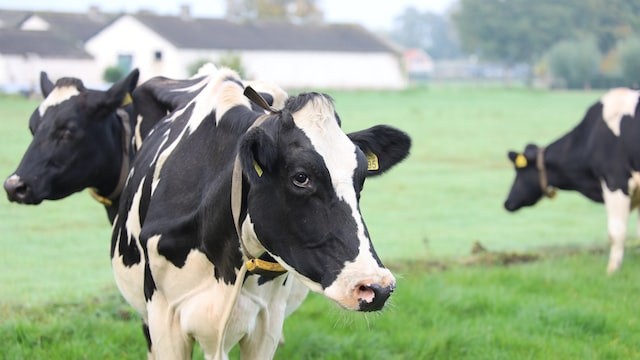Methane emissions can now be cut by 99% using easy and affordable methods, according to a study.
The approach might significantly advance the fight against climate change.
Livestock farming slurry makes more environmentally friendly

Methane levels in the atmosphere have more than doubled.
Since cows and other ruminants produce methane throughout digestion, this is primarily owing to human meat consumption.
The waste produced by animals is another significant source, as per ScienceDaily.
In order to stop these processes, researchers from all around the world are looking for solutions.
A potential solution to the issue has now been put forth by Holtkamp, his scientific advisor Dr. Manfred Trimborn from the Institute for Agricultural Engineering at the University of Bonn, and Dr. Joachim Clemens from the fertilizer producer SF-Soepenberg GmbH.
Bacteria and fungi alter slurry by reducing undigested organic material to ever-smaller molecules.
At the conclusion of these activities, methane is created.
However, the chemical also has other benefits, such as improving the slurry's fertilizing properties by adding nitrogen to it.
Also, it avoids the development of what is known as floating layers, which are deposits of organic materials that harden into a solid crust on the slurry and obstruct gas exchange.
Usually, this crust needs to be broken up and mixed in on a frequent basis.
It is currently unknown how the technology influences the slurry's ammonia release.
Despite not directly harming the environment, the poisonous gas ammonia can be transformed into detrimental greenhouse gases.
The procedure also benefits the animals since they are frequently housed on so-called slatted floors.
Their waste drips into a big container through holes in the floor.
The fecal-urine mixture might froth over time and rise back up through the holes thanks to microbial conversion.
Low-emission of Ammonia through dissemination methods
When slurry interacts with the air, especially in warm, windy circumstances, ammonia emissions rise.
This contact can be decreased and emissions lowered by spreading slurry with equipment like shallow injection, trailing shoes, or dribble bars, as per AHDB.
When splash plate equipment is employed, up to 80% of the nitrogen present in slurry may be lost to the environment.
Ammonia emissions at spreading can be cut by up to 70% with shallow injection.
To spread slurry, pick a calm, colder day with little breeze.
Surface-spread slurry and FYM should be incorporated as soon as feasible, preferably within 12 hours, into the soil.
Waste of Farm Animals makes biologically stable through Microbial Conversion
Agriculture is fundamentally about controlling the flow of energy.
When solar energy is gathered by developing crops, this energy flow starts, as per Pennstate Extension.
In response, farm animals consume the energy in crops to increase their body mass and produce milk or eggs.
With breathing and heat from the animal's body, some energy is lost.
Manure is the excretion of the residual energy.
The energy that is evacuated generates food for the bacteria that inhabit the manure.
When the energy supply is exhausted by the microorganisms, the manure could no longer sustain microbial activity.
Manure is now regarded biologically stable because it won't break down any more.
© 2026 NatureWorldNews.com All rights reserved. Do not reproduce without permission.





